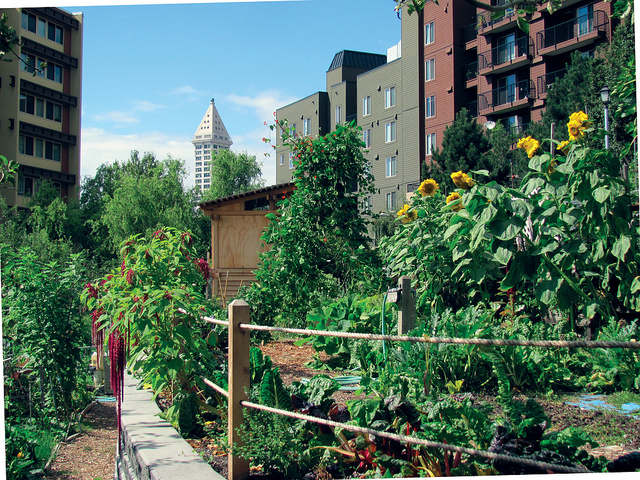The smart Trick of City Blooming That Nobody is Talking About
The smart Trick of City Blooming That Nobody is Talking About
Blog Article
The Basic Principles Of City Blooming
Table of ContentsExcitement About City BloomingThe 2-Minute Rule for City BloomingUnknown Facts About City Blooming10 Simple Techniques For City BloomingThe City Blooming Ideas
Intrigued in growing food for sale in the City of Chicago? Below is a checklist of often asked inquiries relating to the regulations and policies that growers should take into consideration when intending a city farming task.
The zoning modification does not customize any type of other codes taking care of composting, structure permits, buying or renting City had property, service licenses or environmental contamination. There are existing codes that control these concerns and they stay in complete impact and might be relevant to your job. Community yards are typically had or managed by public entities, public companies or community-based companies and maintained by volunteers.
Urban ranches expand food that is planned to be sold, either on a nonprofit or for-profit basis. Due to their industrial purpose, city farms require an organization certificate.
Excitement About City Blooming
Composting is permitted yet just for plant material that is generated and utilized on site. The amount of garden compost product can not surpass 25 cubic yards at any given time according to the standards in 7-28-715 of the City's Municipal Code. Yes. Because the soil at the majority of brand-new garden sites requires changing, compost, dirt, wood chips, or other products can be acquired to create or improve the growing room - indoor plants.

If a building permit is required then the hoophouse will be thought about an accessory structure. You can learn more about the building license requirements by getting in touch with the Department of Structures. The 25,000-square-foot dimension limit is meant to protect against a solitary community garden from controling a given block or taking away from the block's existing property or commercial personality.
The limit does not apply to gardens situated in Public Open Area (POS) areas. Can there be even more than one community find garden that is 25,000 square feet on a single block? Secure fencing is not needed, nonetheless, gardens that have large auto parking areas might be required to set up fence or other landscaping attributes.
Indicators on City Blooming You Should Know
B1 & B2 areas call for that all commercial usage activities be performed inside your home. Is fencing needed for urban farms? Fences might be required, along with landscaping and testing, for specific car parking locations and outdoor job or storage areas depending on place and the certain task taking area.
Urban ranches require building permits and zoning approvals prior to building (landscaping). Various other forms of city testimonial may be needed depending on certain frameworks, tasks, dimension, landscaping, licensing, public health and stormwater administration concerns.
The Department of Company Affairs and Consumer Defense can help figure out the particular type of business certificate that's required. Off road parking is needed for the majority of commercial projects in Chicago. The called for number of parking rooms is based on the number of workers working on site and not the square video of the expanding area.
What Does City Blooming Mean?

A metropolitan farm can offer compost product created on website, nevertheless, the operation should comply with the guidelines in 7-28-715 of the Chicago Municipal Code. Aquaponic systems are allowed indoors on city ranches in several zoning areas.
Approximately 5 hives or swarms of honey may be kept as an accessory use. Nevertheless, beekeepers should register with the Illinois Division of Farming. To find out more regarding the suggested zoning amendment you might speak to the Division of Housing and Economic Development, Bureau of Preparation and Zoning at 312.744.8563.
Farming in cities and metropolitan areas A city ranch in Chicago. Urban agriculture describes different practices of growing. https://soundcloud.com/cityblooming, handling, and dispersing food in metropolitan areas. The term also applies to the location tasks of pet husbandry, aquaculture, beekeeping, and horticulture in an urban context. Urban farming is identified from peri-urban farming, which occurs in rural locations at the edge of suburban areas.
City Blooming Fundamentals Explained
, that look for to form social networks established on a common ethos of nature and neighborhood holism. These networks can create by way of formal institutional assistance, becoming integrated right into regional community preparation as a "transition community" activity for sustainable metropolitan advancement.
The much more straight accessibility to fresh veggie, fruit, and meat items that might be realised with metropolitan agriculture can boost food protection and food security while reducing food miles, resulting in reduced greenhouse gas discharges, therefore adding to climate change mitigation. Some of the first evidence of urban farming originates from Mesopotamia.
Report this page